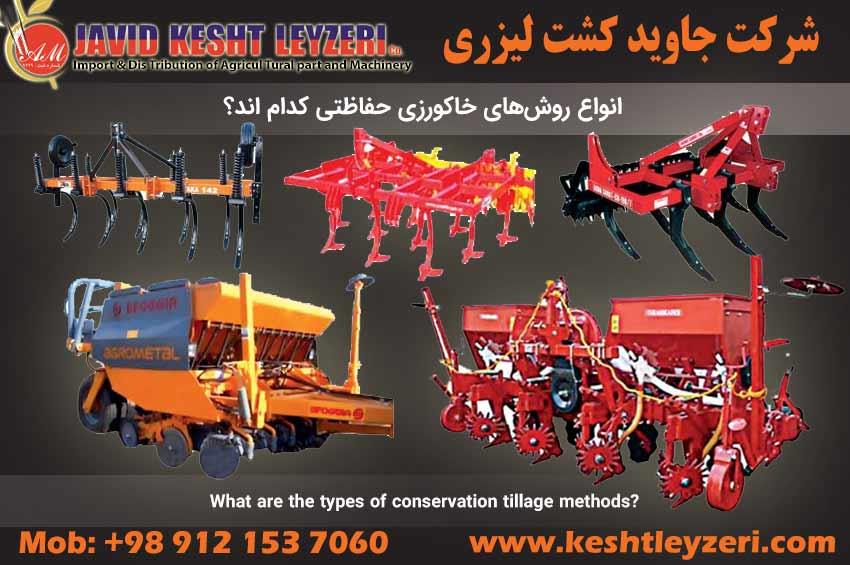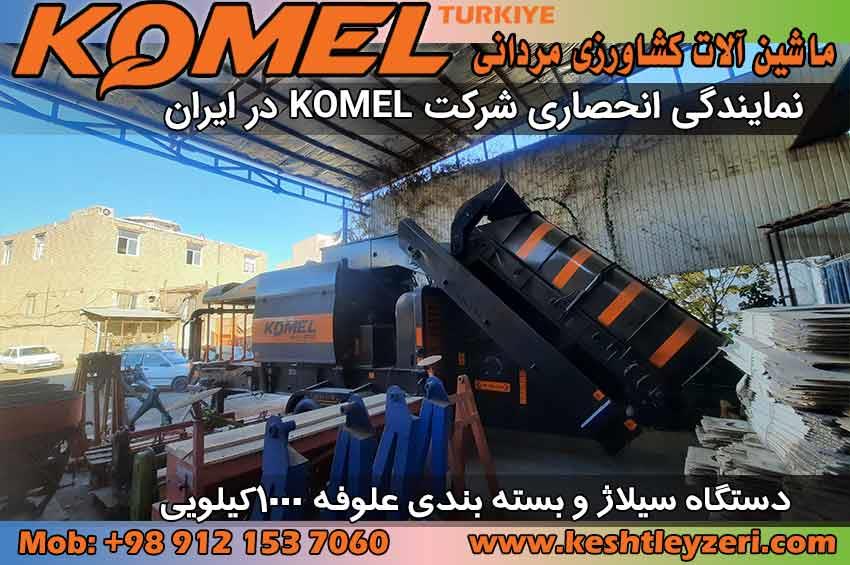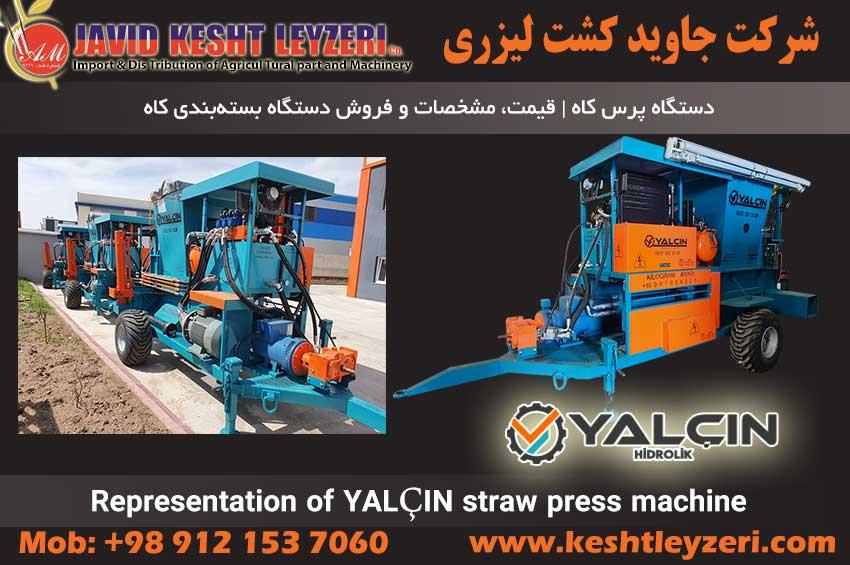
What are the types of conservation tillage methods?
javid keshtleyzeri Co.ltd
List of contents of this section:
How is the low tillage method with indirect planting in conservation tillage?
What are the types of protective tillage tools that are used to prepare the land for cultivation?
What is a disc?
What is pen iron?
What is a compound cultivator?
What is the method of no-tillage with direct planting for conservation tillage?
In the following, the above contents will be reviewed.
Conservation tillage is done in two ways, low tillage (indirect planting) and no tillage (direct planting).
How is the low tillage method with indirect planting in conservation tillage?
This method refers to all tillage methods that use less number of operations than the conventional method or less mechanical energy. These operations are known as low tillage or minimal tillage. The tools used in this method are divided into two groups: the first group of tools used to prepare the land and the second group of tools that need a sowing device for planting seeds.
What are the types of protective tillage tools that are used to prepare the land for cultivation?
The first group includes all kinds of disc discs, pen plows, and compound cultivators. Types of disc plows, pen plows, and compound tillers are among the common tools in these methods.
What is a disc?
Disk discs are one of the most common and accessible tools for preparing land. There are light and heavy types of these discs. For use in shallow tillage methods, it is recommended to use light discs, and if heavy discs are used, set them to work at a shallow depth. To avoid large clods in the ground, check the condition of the ground.
What is pen iron?
Pen plows are used in dry soils with minimum moisture of the type equipped with non-spring stems to break the hard layer of soil without turning it over. The use of these plows depends on the condition of the land, and if the soil is wet, it causes large lumps to rise, which requires frequent operations and is not recommended.
To prepare the seed bed, it is recommended to use a pen plow equipped with wide goose claw blades at a depth of 8 to 10 cm in the soil.
What is a compound cultivator?
These implements are a combination of two or more different tillage agents that work together as an integrated unit and are performed as a single step. These implements include spring and non-spring pen plows with chisel or goose claw blades, plain disc discs with convex edges, and rollers. Despite the higher quality of the remaining surface after the traffic of compound cultivators compared to simple cultivators, but due to the greater weight of the devices and their longer length, they need a larger tractor with more power to pull them.
What are the types of low tillage tools used for conservation tillage and seed planting?
The second group of low-tillage tools includes tools that, in addition to performing surface tillage by the front part of the machine, have a working device behind the front tillage units. This means that once the device passes over the soil surface, land preparation and seed planting operations are performed simultaneously. These devices, which are also known as combines or multi-functional devices, use various tools such as chisel packers, 5-branch, 7-branch cultivators, etc., cultivators, and goose claws to prepare the land after harvesting. Also, a cover of the residues of the previous crop remains on the field.
What is the method of no-tillage with direct planting for conservation tillage?
In the no-tillage method with direct planting, no special operation is done to prepare the land and the sowing devices used are designed in such a way that they can place the seed directly in the desired depth of the soil. In addition to direct planting, these devices usually spread chemical fertilizers at the same time. No-tillage machines have a relatively high weight and require heavy tractors with more than 120 horsepower to pull them.
The high accuracy of the device in measuring and planting seeds, the ability to plant seeds and fertilizers in conditions of very high soil moisture and the presence of many surface residues are the advantages of these devices. In this method, without land preparation operations and directly using tillage tools, cultivation is done in the remains of the previous crop so as to create minimum disturbance in the soil. The tillage of the soil from the time of harvesting the previous crop to the time of planting the next crop remains intact except for the addition of nutrients. Weed control is done at the beginning of cultivation by using herbicides, but after that, tillage operations may also be used for this purpose.






